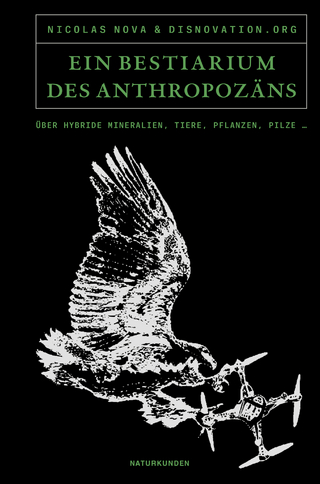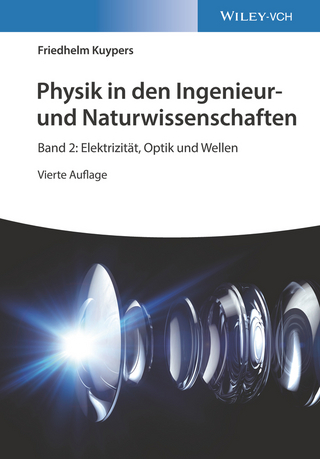
Microbiology of Drinking Water Production and Distribution
Seiten
2016
Delve Publishing (Verlag)
978-1-68095-829-4 (ISBN)
Delve Publishing (Verlag)
978-1-68095-829-4 (ISBN)
- Titel nicht im Sortiment
- Artikel merken
Examines the public health aspects of drinking water treatment and distribution. The book clarifies the different water treatment processes and their effects on waterborne microbial pathogens and parasites. It highlights several methodologies to gauge the bacterial growth potential in water distribution systems.
Although there is no universal method for concentrating all enteric viruses from water, some methods are quite effective for some of the enteric viruses in some types of water. Flowthrough-filter adsorption-elution systems and ultrafiltration methods with anisotropic, polymeric membranes in tangential-flow systems are the best for recovery of small quantities of enterovirus in large volumes of treated or finished water. Virus concentration from water by adsorption to precipitable salts or polyelectrolytes, aqueous polymer two-phase separation, reverse osmosis, hydroextraction, continuous-flow ultracentrifugation, and forced-flow electrophoresis methods can generally be applied only to samples of a few liters. Therefore, they are not suited to recovery of a low number of infectious units of virus from large samples of water.
The principal microbiological contaminants found in drinking water are bacteria, viruses, and pathogenic protozoa. Routine microbiological monitoring of water supplies is primarily based on tests for coliforms. These organisms have been used successfully for indicating contamination and treatment failures, but may need supplementing with other organisms to further improve confidence in water supply hygiene. Novel techniques may greatly alter the water microbiology laboratory. Microbiological contaminants, such as fungi and algae, do not seem to be important causes of waterborne disease, although they are sometimes associated with undesirable tastes and odors. This book entitled Microbiology of Drinking Water Production and Distribution presents the public health facets of drinking water treatment and distribution. It clarifies the different water treatment processes and their effects on waterborne microbial pathogens and parasites. It highlights several methodologies to gauge the bacterial growth potential in water distribution systems.
Microbiology of Drinking Water Production and Distribution starts by introducing the new standards for drinking water and other public health aspects of drinking water treatment and distribution (Section 1). Section 2 and 3 talk about the microbiology of drinking water. Section 4 gives some examples of the different water disinfection and treatment processes, and their impacts on waterborne microbial pathogens and parasites. Drinking water quality may be degraded in water distribution systems—microorganisms form biofilms within distribution systems that allow them to flourish (Section 5). The monitoring and stability of drinking water biology is addressed on Section 6. Very few studies are available about bioterrorism on drinking water. So Section 7 reviews the general biosurveillance in which drinking water is included. In addition, the Section 8 reviews the research on drinking water quality in developing countries. Section 9 examines the microbiological water quality of bottled water. Although there is no universal method for concentrating all enteric viruses from water, some methods are quite effective for some of the enteric viruses in some types of water. Flowthrough-filter adsorption-elution systems and ultrafiltration methods with anisotropic, polymeric membranes in tangential-flow systems are the best for recovery of small quantities of enterovirus in large volumes of treated or finished water. Virus concentration from water by adsorption to precipitable salts or polyelectrolytes, aqueous polymer two-phase separation, reverse osmosis, hydroextraction, continuous-flow ultracentrifugation, and forced-flow electrophoresis methods can generally be applied only to samples of a few liters. Therefore, they are not suited to recovery of a low number of infectious units of virus from large samples of water. Drinking water quality may be degraded in water distribution systems—microorganisms form biofilms within distribution systems that allow them to flourish. Various methodologies have been proposed to assess the bacterial growth potential in water distribution systems.
Microbiology of Drinking Water Production and Distribution gives guidance on appropriate application of monitoring parameters for ensuring the safety of drinking water and to inform risk management decisions, with an emphasis on control of facial contamination.
Although there is no universal method for concentrating all enteric viruses from water, some methods are quite effective for some of the enteric viruses in some types of water. Flowthrough-filter adsorption-elution systems and ultrafiltration methods with anisotropic, polymeric membranes in tangential-flow systems are the best for recovery of small quantities of enterovirus in large volumes of treated or finished water. Virus concentration from water by adsorption to precipitable salts or polyelectrolytes, aqueous polymer two-phase separation, reverse osmosis, hydroextraction, continuous-flow ultracentrifugation, and forced-flow electrophoresis methods can generally be applied only to samples of a few liters. Therefore, they are not suited to recovery of a low number of infectious units of virus from large samples of water.
The principal microbiological contaminants found in drinking water are bacteria, viruses, and pathogenic protozoa. Routine microbiological monitoring of water supplies is primarily based on tests for coliforms. These organisms have been used successfully for indicating contamination and treatment failures, but may need supplementing with other organisms to further improve confidence in water supply hygiene. Novel techniques may greatly alter the water microbiology laboratory. Microbiological contaminants, such as fungi and algae, do not seem to be important causes of waterborne disease, although they are sometimes associated with undesirable tastes and odors. This book entitled Microbiology of Drinking Water Production and Distribution presents the public health facets of drinking water treatment and distribution. It clarifies the different water treatment processes and their effects on waterborne microbial pathogens and parasites. It highlights several methodologies to gauge the bacterial growth potential in water distribution systems.
Microbiology of Drinking Water Production and Distribution starts by introducing the new standards for drinking water and other public health aspects of drinking water treatment and distribution (Section 1). Section 2 and 3 talk about the microbiology of drinking water. Section 4 gives some examples of the different water disinfection and treatment processes, and their impacts on waterborne microbial pathogens and parasites. Drinking water quality may be degraded in water distribution systems—microorganisms form biofilms within distribution systems that allow them to flourish (Section 5). The monitoring and stability of drinking water biology is addressed on Section 6. Very few studies are available about bioterrorism on drinking water. So Section 7 reviews the general biosurveillance in which drinking water is included. In addition, the Section 8 reviews the research on drinking water quality in developing countries. Section 9 examines the microbiological water quality of bottled water. Although there is no universal method for concentrating all enteric viruses from water, some methods are quite effective for some of the enteric viruses in some types of water. Flowthrough-filter adsorption-elution systems and ultrafiltration methods with anisotropic, polymeric membranes in tangential-flow systems are the best for recovery of small quantities of enterovirus in large volumes of treated or finished water. Virus concentration from water by adsorption to precipitable salts or polyelectrolytes, aqueous polymer two-phase separation, reverse osmosis, hydroextraction, continuous-flow ultracentrifugation, and forced-flow electrophoresis methods can generally be applied only to samples of a few liters. Therefore, they are not suited to recovery of a low number of infectious units of virus from large samples of water. Drinking water quality may be degraded in water distribution systems—microorganisms form biofilms within distribution systems that allow them to flourish. Various methodologies have been proposed to assess the bacterial growth potential in water distribution systems.
Microbiology of Drinking Water Production and Distribution gives guidance on appropriate application of monitoring parameters for ensuring the safety of drinking water and to inform risk management decisions, with an emphasis on control of facial contamination.
Patricia Marques obtained her PhD form University College Dublin in 2010. Her interests are on Microbiology and Parasitology. She is currently working as a Postdoc at University of Maryland Baltimore, USA on Chlamydia infections.
| Erscheinungsdatum | 16.03.2018 |
|---|---|
| Sprache | englisch |
| Maße | 152 x 229 mm |
| Themenwelt | Naturwissenschaften ► Biologie ► Allgemeines / Lexika |
| Naturwissenschaften ► Biologie ► Mikrobiologie / Immunologie | |
| Technik ► Umwelttechnik / Biotechnologie | |
| ISBN-10 | 1-68095-829-1 / 1680958291 |
| ISBN-13 | 978-1-68095-829-4 / 9781680958294 |
| Zustand | Neuware |
| Haben Sie eine Frage zum Produkt? |
Mehr entdecken
aus dem Bereich
aus dem Bereich
Über hybride Mineralien, Tiere, Pflanzen, Pilze ...
Buch | Hardcover (2023)
Matthes & Seitz (Verlag)
28,00 €
Band 2: Elektrizität, Optik und Wellen
Buch | Softcover (2022)
Wiley-VCH (Verlag)
39,90 €
Berufsbilder von und für Biologen und Biowissenschaftler
Buch | Softcover (2024)
Verband Biologie, Biowiss. u. Biomedizin in Dtl. e.V. (Verlag)
16,80 €


